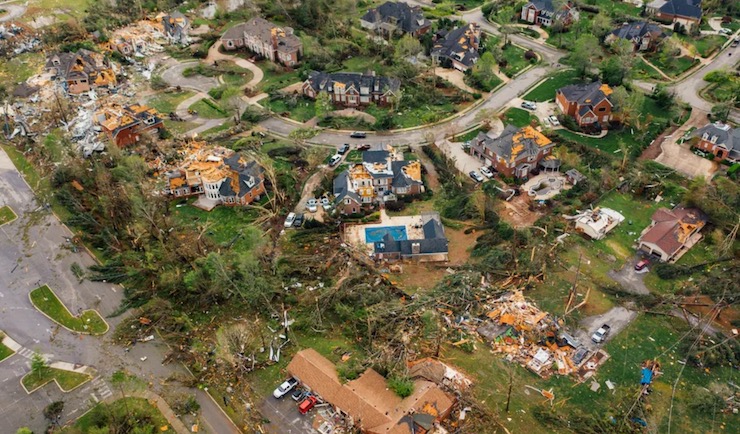Drone Operator Using Drones to Help Locate Missing Pets After Natural Disasters

When natural disasters strike, they leave a tremendous amount of damage in their wake. Efforts to restore a post-disaster zone can take months, sometimes even years to complete. The immediate focus after a wildfire, hurricane, tornado, or earthquake is of course to tend to the safety of human life. But as one emergency relief volunteer from California learned, the safety and well being of animals is often overlooked. Whether they are wild or domestic, rescuing animals after the events of a natural disaster can now be tended to with the help of a drone.
After the 2018 Camp Fire in Northern California, the deadliest and most destructive single fire ever in California, Doug Thorn met with survivors to see how he could help them. As a cinematographer from Oakland, CA he realized that his skills as a drone operator could help bring a sense of ease to people by helping them locate missing pets. The bird’s eye point of view that the drone gave Doug allowed him to find missing dogs and cats, returning them to families that had lost their homes. Having their beloved pets back gave these people some hope.
Doug was so moved after being able to help his native Californians that he decide he would continue assisting in relief efforts whenever possible. After Hurricane Dorian, a category 5 storm, hit land in the Bahamas in 2019, the country was left in a state of devastation. With winds peaking at 185 mph, Dorian was the worst storm in recorded history to ever hit the Bahamas. At least 50 people died due to the storm that completely destroyed Bahamian communities. Doug flew to the Bahamas with his drone and immediately began filming the wreckage. His initial goal was to show the world what was really happening, keeping the plight of the Bahamians in view of the public. As he was flying his drone he once again began to spot cats and dogs rummaging through the destruction.
While walking through the mounds of debris it was almost impossible to spot the animals. But as Doug said, “I spotted numerous dogs and cats with my drones and quickly realized this was the most effective way of finding these poor animals before it’s too late.” Once he had located an animal he would call animal control and they could come out to rescue the displaced animal. It wasn’t long before Doug realized that with an infrared camera on his drone he could help rescue even more animals. So he returned to California and set up a GoFundMe page to raise the money he needed to upgrade his drone.
All over the world people were moved by the stories and images that Doug shared about his animal rescue missions. With monies raised through online campaigns and his own personal financing Doug now has a range of different drones with high zoom, definition, and infrared camera capabilities. He uses DJI’s Matrice 210RTK, Mavic Pro 2, Phantom 4 Pro, and Inspire 2. This past summer Doug ventured out to Australia with his cache of infrared equipped drones. The 2019-2020 Australian wildfire season was one of the worst in history and has been named the Black Summer. Home to some of the most unique wildlife in the world, millions of dollars have been raised so people like Doug could try to locate and rescue the many creatures affected by the fires.
With years of drone photography experience, and now with top of the line drones and cameras, Doug has become the go-to guy when it comes to rescuing animals after natural disasters. With the drone’s infrared camera he can quickly and easily locate animals hiding. Once he spots an animal he can then use the camera’s zoom lens to see if the animal in question is also in need of medical attention. Then, noting down precise GPS coordinates provided by the drone, he can relay the information to rescue personnel. If the animal is not in need of rescue, data on location and species are logged for preservationists to keep track of where animal populations are congregating and what measures need to be taken to ensure population regrowth.
When asked if he could use the drone to help find missing persons, Doug said he would be happy to help. But for now, he sees that there is already solid infrastructure for helping people in need while animals are often forgotten about in times of crisis. As for the crisis facing Australia’s wildlife, Doug said, “I knew I could play an integral role in helping save those animals, introducing this new technology to Australia.” Though relief efforts have been put somewhat on hold since the coronavirus outbreak, Doug plans on continuing his volunteer work when he can.
|